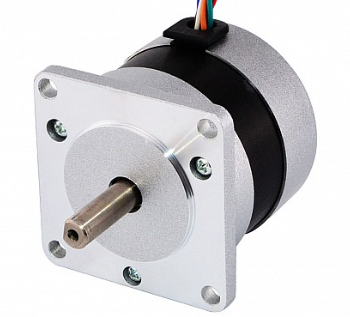What are sensed brushless motors and senseless brushless motors?
1. The difference between sensored brushless motors and sensorless brushless motors
The sensor in sensorless brushless refers to "Hall sensor", so what is "Hall"? Hall refers to the Hall effect. Simply put, when a current passes through a conductor perpendicular to the external magnetic field, a potential difference will appear between the two end faces of the conductor perpendicular to the magnetic field and the direction of the current. It can be easily known through the Hall effect. Regardless of high-speed or low-speed motor operating status. It can be seen that the inductive brushless motor is a brushless motor without Hall sensor feedback. It indirectly detects the rotor position commutation through the voltage and current changes of the motor winding.

2. Characteristics of inductive brushless motors and inductive brushless motors
The position of the rotor can be known when the inductive motor is at rest, but the position of the rotor needs to be rotated for the non-inductive motor. Therefore, the non-inductive motor will shake when it just starts and stops. A brief summary is that it will shake when starting and stopping; Induction motors use Hall element sensing, which is less susceptible to interference and more accurate in judgment. Therefore, it can be applied to fast start and fast stop conditions. It usually provides better low-speed torque performance because they can accurately operate at low speeds or even at rest. Control commutation.
3. Usage scenarios of sensored brushless motors and sensorless brushless motors
When choosing between an inductive motor and a non-inductive motor, you need to consider the following aspects:

1). Speed range: If the speed is higher, it is recommended to choose a non-inductive motor; if the speed is lower, it is recommended to choose an inductive motor.
2). Control accuracy: If high-precision control is required, it is recommended to choose an inductive motor; if the control requirements are relatively low, it is recommended to choose a non-inductive motor.
3). Cost factor: If the cost requirements are low, it is recommended to choose a non-inductive motor; if the accuracy and operating stability requirements are high, it is recommended to choose an inductive motor.
4). Control distance: If the distance is less than 3 meters, you can use an inductive motor. When the distance is greater than or equal to 3 meters, it is recommended to use a non-inductive motor.
All in all, non-inductive motors are suitable for applications with small to medium power and high speed operation, such as fans, model toys, etc. Inductive motors are suitable for high-precision and high-power applications, such as machine tools, automation equipment, etc.
Discussions
Become a Hackaday.io Member
Create an account to leave a comment. Already have an account? Log In.